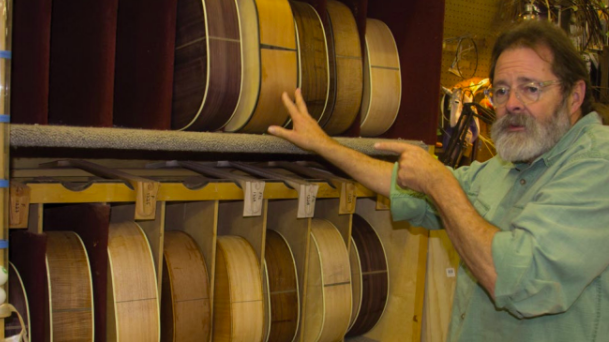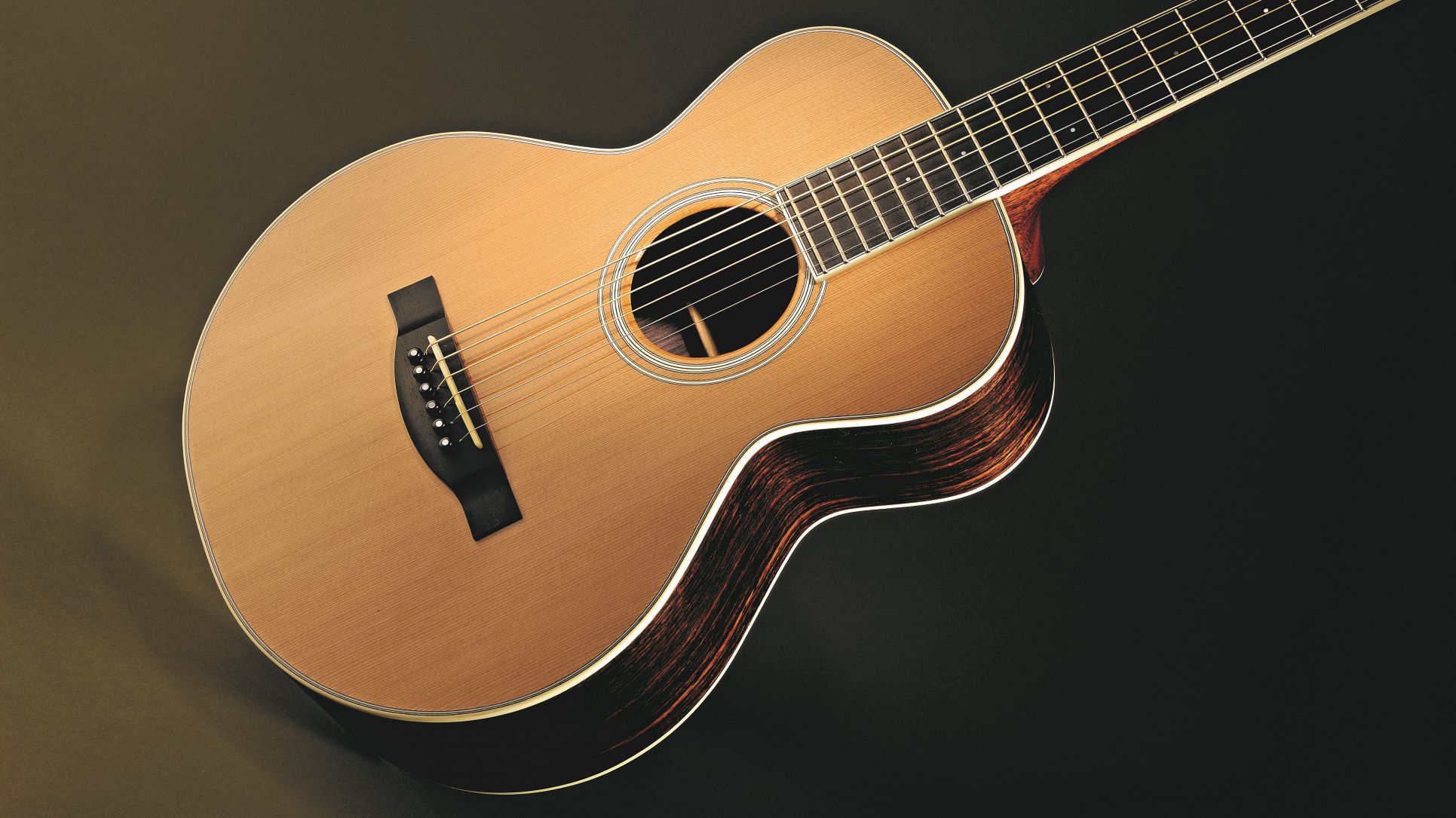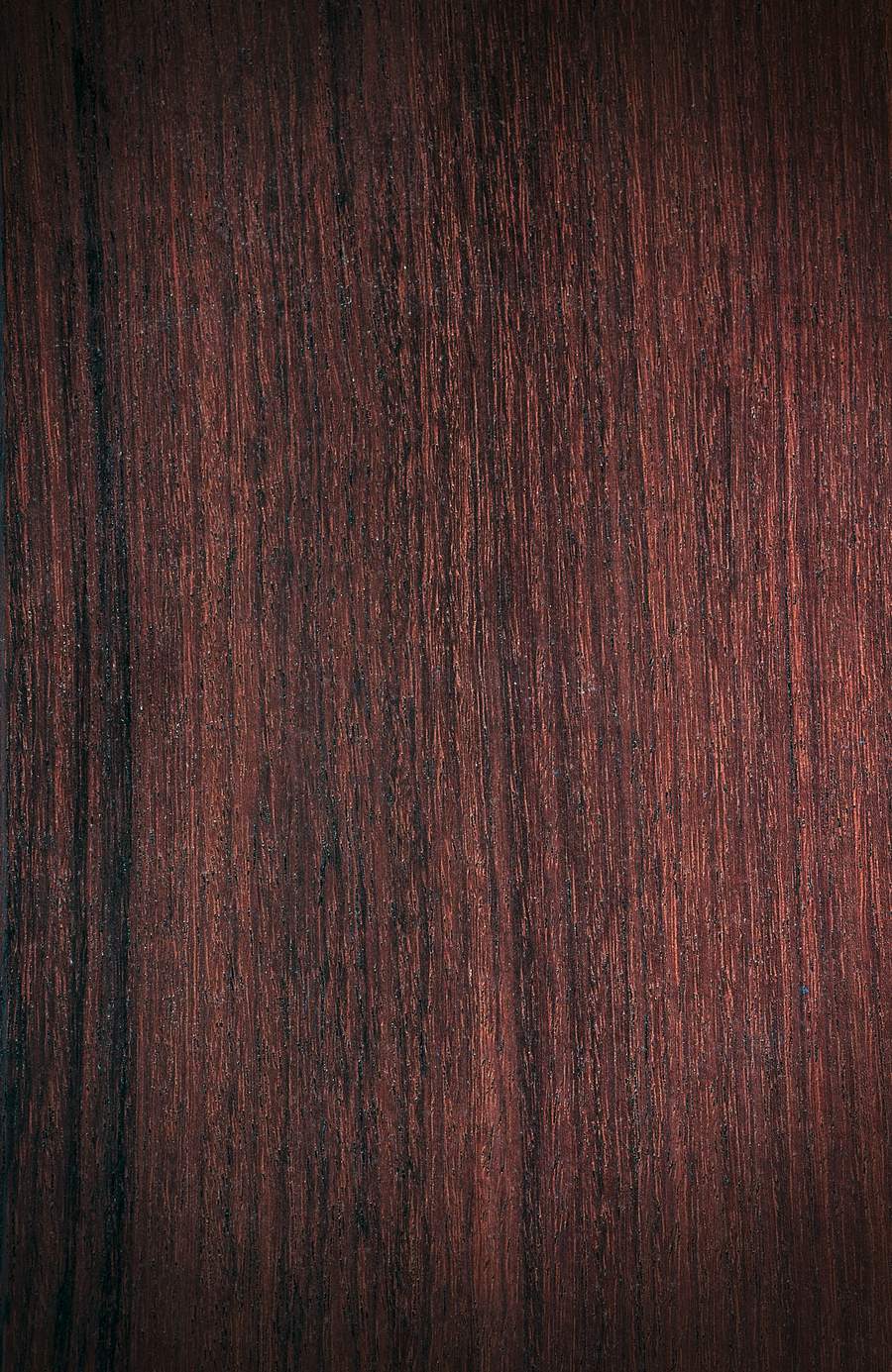A Brief Guide to Acoustic Guitar Tonewoods
Santa Cruz Guitar Company founder Richard Hoover gives us the lowdown on the most popular woods used in acoustic guitar building.

The tonewoods used in the creation of an acoustic guitar are critical to how it sounds, as the instrument’s top, back and sides have the greatest overall effect on tone. The top is the soundboard that pumps air into a resonance chamber formed by the back and sides. “With tops, density and weight are particularly significant, while the weight-to-strength ratio, as well as the shape, are important regarding the reflective back and sides,” explains Santa Cruz Guitar Company founder Richard Hoover.
To help us understand the differences, here are Richard’s brief summaries on a variety of tonewoods commonly used to build acoustic guitars…

Tops
• Sitka spruce
A warm tone, forgiving and universal. Sitka spruce is the most popular choice in acoustic guitars for good reason: It fits most people most of the time.
• Adirondack spruce
Brighter, clearer, and more articulate, with a faster response than Sitka.
• European spruce
Get The Pick Newsletter
All the latest guitar news, interviews, lessons, reviews, deals and more, direct to your inbox!
The same properties as Adirondack, controlled via density – i.e., the thickness of the cut. All European spruce belongs to the species picea abies, whether it’s Italian, Swiss, Carpathian or Norwegian.
• Moon spruce
The same species as European spruce, moon spruce is harvested at night according to the cycles of the moon. It’s generally one of the clearest, most articulate and quickest responding woods.
• Cedar
Warmer in tone but faster in response than all other tonewoods, cedar is an excellent choice for the fingerstylist who plays in open tunings because it responds to a light attack quickly and with good volume. It makes up for the loss of energy that comes from playing without a pick on strings that are tuned down and therefore have less tension.
• Redwood
Redwood and cedar are interchangeable if the right pieces of wood are chosen. Unlike cedar, redwood offers more headroom and doesn’t lose its integrity when overdriven, making it more versatile.
• Mahogany
If cut to the proper density, it can be clearer and more articulate than spruce. If done wrong, it is just kind of funky and dead.
• Koa
Same as mahogany.
• Figured mahogany
Same as mahogany. “Figured mahogany” refers to the wood’s appearance and isn’t an indicator of tone. Like bear claw spruce and grain width, it’s purely a cosmetic thing.

Back & Sides
• Brazilian Rosewood
Good old-growth Brazilian rosewood is dense and hard like slate. It sounds like glass – very articulate and clear. It’s also efficient and powerful, with awesome definition.
• Mahogany
On the spectrum of bright to dark, mahogany is toward the center, along with koa. It maintains some warmth, so it’s pleasant but has more clarity than the warmest woods.
• Koa
Extremely variable in density, it’s a very versatile tonewood.
• Maple
Bright, which is why you find it in jazz guitars.
• Blackwood
Bright, dense and hard like Brazilian rosewood.
• Cocobolo
Bright, clear and articulate like Brazilian rosewood.
• Walnut
While it leans toward the warmer end of the spectrum, walnut has to be selected and cut to achieve those qualities because, like koa, its density varies greatly.
• Sycamore
Though it varies all over the place, it’s very much like mahogany when chosen right.
• Indian rosewood
Moving much more toward the warmer end of the sonic spectrum, with a darker tone, Indian rosewood is also quite variable, so it must be chosen and cut to achieve the desired sound.
Visit the Santa Cruz Guitar Company's website here.
Jimmy Leslie has been Frets editor since 2016. See many Guitar Player- and Frets-related videos on his YouTube channel, and learn about his acoustic/electric rock group at spirithustler.com.
“I felt myself starting to cry.” Eric Clapton’s 'MTV Unplugged' Martin acoustic returns in two guises. But Slowhand’s affinity for the guitar brand began long before that seminal live performance
"I have a Mercury on the guitar now, which makes me very happy.” Brian May’s new signature Gibson SJ-200 features a subtle tribute to the late Queen singer Freddie Mercury










